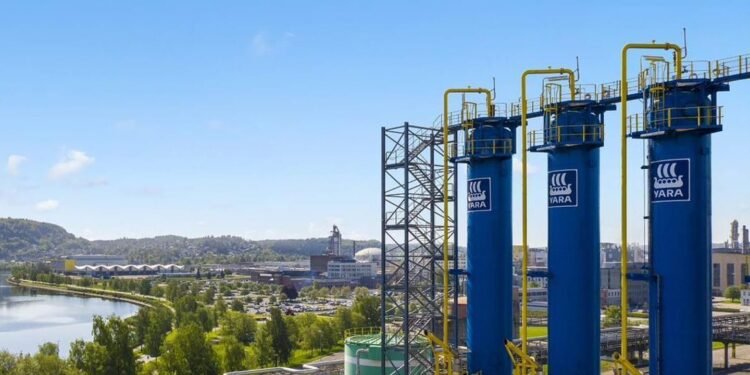Ammonia (NH3) can be decomposed to produce hydrogen gas without releasing CO2. The ease of transport and high hydrogen density makes it valuable for the green energy industry.
A drawback of using NH3 is that it requires very high temperatures for decomposition reactions. But what if it was possible to accomplish this at a much lower temperature efficiently?
This is the objective of a team of university and industrial researchers in Japan.
They have come up with a ‘surface protonics’-assisted method for the on-demand production of green hydrogen from ammonia using an electric field and ruthenium/cerium oxide (Ru/CeO2) catalyst.
Surface protonics make low-temperature catalytic reactions possible for breaking apart ammonia and extracting its hydrogen.
Now, H2 gas, owing to its high energy density and carbon-free nature, is gaining growing attention as the energy source for a green and sustainable future.
But, despite being the most abundant element in the universe, hydrogen is mostly found in a bound state as chemical compounds such as ammonia, metal hydrides, and other hydrogenated compounds.
Among all the hydrogen carriers, ammonia stands out as the obvious candidate of promise owing to its wide availability, high hydrogen content with hydrogen making up 17.6% of its mass, and ease of liquefaction as well as transportation.
However, a major drawback that hinders its exploitation as an on-demand green hydrogen source for practical applications is the need for extremely high temperatures (more than 773 degrees Kelvin) for its decomposition.
But hydrogen production for fuel cells and internal combustion engine usage calls for high ammonia conversion rates at low temperatures.
Despite enthusiasm for ammonia as an energy vector, there has been limited analysis of the energy requirements and situational suitability of this additional phase in the hydrogen storage cycle.
There is mounting pressure from the transport sector especially to crack this challenge, notably from the global shipping industry.
Big ships are in design and even on order, despite the lack of a definitive, low-cost way of releasing hydrogen from its ammonia vector, let alone an adequate grip on greenhouse gas-related issues.
That said, in an attempt to achieve a workable low temperature breakdown of ammonia to release its hydrogen a new compact process capable of achieving this has been developed by the Japanese team.
Professor Yasushi Sekine from Waseda University, with his team including Yukino Ofuchi and Sae Doi, plus Kenta Mitarai from Yanmar Holdings, have been able to demonstrate “a high rate of ammonia-to-hydrogen conversion at remarkably lower temperatures” by applying an electric field and utilising the catalyst Ru/CeO2, which is both highly active and readily manufactured.
Talking about the project last month, Professor Sekine said: “This is a collaborative project between our laboratory at Waseda University and Yanmar Holdings which is a leading company in ammonia utilisation.
“We aimed to develop a process that would enable us to exploit the ability of ammonia to generate hydrogen on-demand. So we started investigating conventional thermal catalytic systems.”
The team observed that the rate-determining step on ruthenium was the desorption (a process where a previously adsorbed substance is released from a surface) of nitrogen at low temperatures and the dissociation of nitrogen and hydrogen at high temperatures.
Their effort to overcome this issue led them to attempt electric field-assisted catalytic reactions.
This technique improved proton conduction at the surface of the catalyst and reduced the energy required for the reaction along with its reaction temperatures to facilitate efficient ammonia conversion.
Using this information, the team designed a novel thermal catalytic system for low-temperature decomposition of ammonia to hydrogen assisted by the easy-to-make catalyst and DC electric field.
They found that their rig efficiently decomposed ammonia even below 473 K. Given a long enough contact time between the ammonia feed and the catalyst, a 100% conversion rate was achieved at 398 K.
This represents a massive drop in the amount of energy required to smash NH3 bonds.
By contrast, the team also observed that, without an electrical field, the nitrogen desorption process slowed rapidly, leading to the ammonia decomposition reaction grinding to a halt.
According to Professor Sekine, this novel approach demonstrates that green hydrogen can be produced from ammonia at low temperatures, ensuring almost 100% conversion at high reaction rates.
“We believe that our proposed method can accelerate the widespread adoption of clean alternative fuels by making the on-demand synthesis of CO2-free hydrogen easier than ever,” concludes Sekine.
A workable commercial system cannot come fast enough given that very little ammonia is used today as an energy vector. Nearly all NH3 is currently produced from fossil fuels and is highly energy intensive.
Recommended for you











